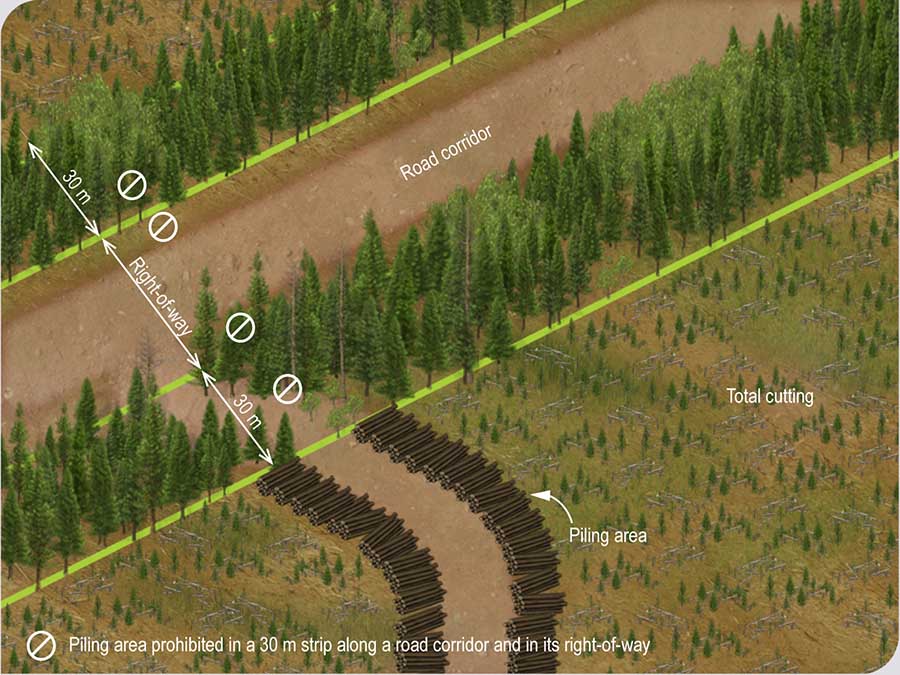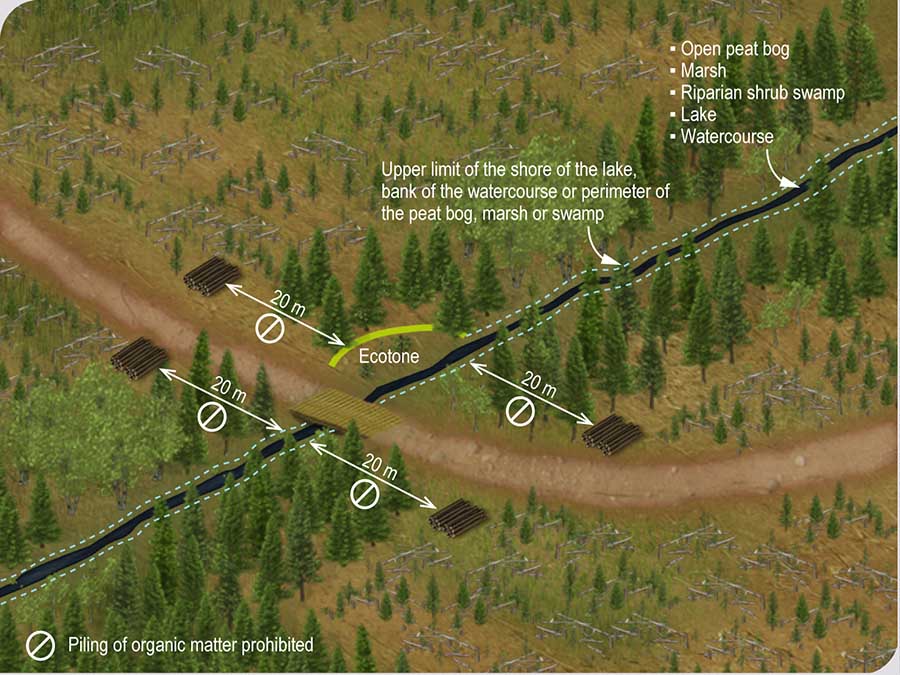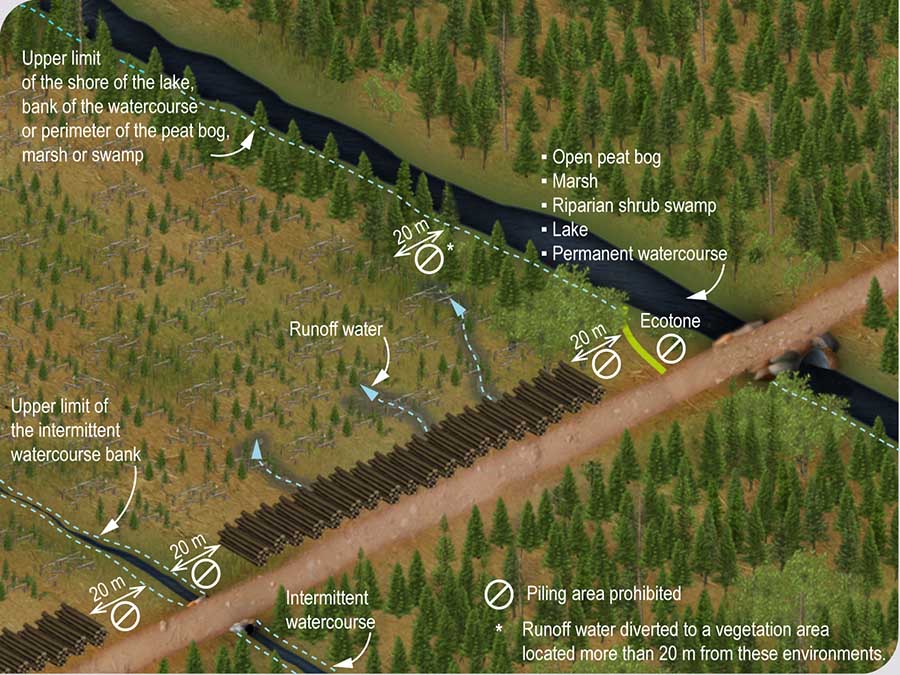Chapter V – Roads, sandpits and forest infrastructures
Division VI – Piling areas, forest camps and facilities used to operate a sugar bush
§1. Piling area
Section 124
The setting up of a piling area is prohibited on a 30-m strip located along a road corridor and in its right-of-way. 
1
Objectives
- To contribute to the quality of the experience in the forest
- To ensure the safety of forest road users
Additional information
In some specific situations, notably due to the topography or low volumes, the setting up of a piling area in a 30-m strip along a road corridor may be warranted. In these situations, a request for an exemption to the Regulation under section 40 of the Sustainable Forest Development Act must be made with the management unit in charge ![]() (in French) to stockpile wood in the right-of-way of a road designated as a road corridor or in the 30-m strip along this corridor. However, the following conditions must be met:
(in French) to stockpile wood in the right-of-way of a road designated as a road corridor or in the 30-m strip along this corridor. However, the following conditions must be met:
- Work must be done over a limited period of time (from harvest to transportation)
- Work must be performed during periods of low usage
- Adequate and effective road signs must be in place and maintained throughout the duration of the work
- Agreement from the main users must be obtained
- Users must be notified of the potential danger by appropriate means (public notices, sign at the ZEC’s gatehouse, etc.)
Any other conditions that address regional issues identified by the management unit in charge ![]() (in French).
(in French).
Figure 124A Distance between a piling area and a road corridor
The setting up of a piling area is also prohibited within 20 m of an open peat bog, a swamp, a riparian shrub marsh, a lake or a watercourse.
2
Objectives
- To preserve the integrity of an aquatic, wetland or riparian environment
- To avoid carrying sediment into an aquatic, wetland or riparian environment
Figure 124B Distance between a piling area and a wetland or aquatic environment
The organic matter from the scraping of soil for the laying out of a piling area must be piled more than 20 m from an open peat bog, a swamp, a riparian shrub marsh, a lake or a watercourse for its reuse. Runoff from a piling area must be diverted to a vegetation area located more than 20 m from those environments. 
3
Objectives
- To preserve the integrity of an aquatic, wetland or riparian environment
- To avoid carrying sediment into an aquatic, wetland or riparian environment
- To preserve organic matter in order to recreate conditions conducive to regeneration
Figure 124B Distance between a piling area and a wetland or aquatic environment
Figure 124C Diversion of runoff water from a piling area
The distance of 20 m referred to in the second and third paragraphs is measured from the perimeter of the peat bog, swamp or marsh or from the upper limit of the shore of the lake or bank of the watercourse. In the presence of a riparian ecotone, the measurement is made from the limit of the ecotone farthest from the environment to be protected. 
4
Objective
- To clarify the scope of the Regulation respecting the sustainable development of forests in the domain of the State
Figure 124B Distance between a piling area and a wetland or aquatic environment
Figure 124C Diversion of runoff water from a piling area


